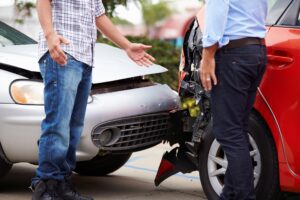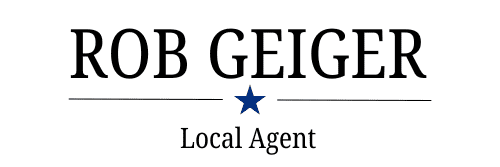How To Get The Most Out Of Your Auto Insurance
Let’s talk about the various coverages available for your personal vehicles. We want to make sure that you get the best insurance that works for you.

First there’s Liability, which includes Bodily Injury (BI) and Property Damage (PD). When you see the word “Liability,” think “the other person(s) involved.” Liability pays you nothing. It is intended solely to take care of the other person(s) involved in any accident for which you are responsible.
In the State of Texas, YOU MUST have Liability insurance to operate a vehicle. The minimum amount you are required to have by law is usually shown as three numbers, 30/60/25. This translates to $30,000/$60,000 of Bodily Injury coverage and $25,000 of Property Damage coverage.
Saying 30/60 of Bodily Injury means your insurance company will pay the other party up to $30,000 per person for bodily injury or death from an accident for which you are responsible, with a maximum payout of $60,000 per incident.
Likewise, the minimum required amount of Property Damage means your insurance company will pay the other party to $25,000 for damage to other people’s property from an accident for which you are responsible.
Making it simple: If you have an accident for which you are responsible, your Liability amounts represent the most your insurance company will pay out. You are personally responsible for anything above those amounts. Thinking about Bodily Injury, I always think about the cost of ambulance rides, emergency rooms, follow-ups, injury rehabilitation and medications, just to name a few potential costs. It’s easy to see how fast those minimum amounts can be exhausted. Same thing with Property Damage. The average vehicle on the road in Texas cost more than $40,000. And remember, you’re also liable for other damaged property, like a fence, a sign, someone’s landscaping…just to name a few of the more common items routinely seen in claims.
Rob’s insider tip: I strongly suggest higher liability limits to avoid getting caught with huge out-of-pocket payouts. Leveling up a step or two — like to 50/100/50 or 100/300/100, or even higher – DOES NOT significantly increase the premium. It’s definitely worth the few extra dollars to cover yourself at higher levels.
What Rob suggests: I feel comfortable when my customers Liability amounts are at 100/300/100.
Personal Injury Protection (PIP) pays for medical treatment, lost wages, rehab services, funerals, childcare, or other accident-related expenses for you and your passengers, regardless of who caused the accident. Limits available are $2,500, $5,000 or $10,000.
Making it simple: PIP is an upgraded version of “Medical Payments” coverage, which was limited to only medical bills. I would use my PIP to pay my medical deductible on my health insurance.
What Rob suggests: Match your PIP to your medical deductible.
Uninsured/Underinsured Motorist Bodily Injury (UMBI) and Uninsured/Underinsured Motorist Property Damage (UMPD) compensates you for your injuries or property damage caused by a driver with no insurance or not enough insurance. This includes hit-and-run incidents.
Making it simple: It’s shocking how many people in Texas have no insurance at all or just pay for state minimums. Because of this, it’s a really good idea to carry enough Uninsured/Underinsured Motorist Bodily Injury to properly cover yourself, your passengers, and your property. Like Liability, this coverage comes in increasing amounts, depending on what makes you comfortable, with a nominal $250 deductible per incident.
Rob’s insider tip: For this coverage, I like to match what customers have in Liability for the Bodily Injury piece, with the Property Damage portion at a level that would at least cover the cost to replace their vehicle.
What Rob suggests: Like Liability, I like to see UMBI amounts of 100/300, and the UMPD amount at 50 or 100, depending on the value of your vehicle.
Collision coverage pays to repair or replace your vehicle after an accident with another vehicle or object. Leased or financed vehicles are required to carry Collision coverage. If the vehicle is owned outright, this coverage is optional. The insured selects a deductible amount they are willing to pay for this coverage, which represents the out-of-pocket expense they will incur to repair or replace their vehicle.
Rob’s insider tip: I always recommend “saving” your collision coverage for bigger accidents to keep your premium lower. Insurance companies always conbsider the number of accidents and payouts over a certain period when determining an applicant’s risk. Many times, filing a claim for minor incidents may end up costing you more in increased premiums, which doesn’t make financial sense.
Let’s say I get door-dinged at the grocery store, and it causes $800 in damage. If I have a $500 deductible, I only stand to recover $300. If my insurance company factors 3 years of history into my rate, is that claim really worth filing? I’d rather keep the claim off my record and wait until I really need it. Claims on your record usually increase the premium.
What Rob suggests: A $1,000 deductible works best for most people.
Comprehensive coverage pays to repair or replace your vehicle if damaged in an incident that is not a collision. This includes theft, vandalism, animal strikes, fallen objects, fire, hail, rodent infestation, vehicle glass, and many others. Like Collision coverage, leased or financed vehicles are required to carry Comprehensive. If the vehicle is owned outright, this coverage is optional. The insured selects a deductible amount they are willing to pay for this coverage, which represents the out-of-pocket expense they will incur to repair or replace their vehicle.
Rob’s insider tip: We live in Texas. We’re going to be exposed to hail. We’re constantly dodging deer and other critters on the road. We’re going to get cracks in our windshield. Comprehensive is a must, in my opinion. I recommend finding out how much a new windshield for your car will cost and select your deductible based on your comfort level in relation to that amount.
What Rob suggests: I like the $1,000 level for Comprehensive deductible to keep the premium down, but if you’re often on roads that produce rock chips like I am, it’s best to have a $250 deductible.
This coverage provides towing to the nearest authorized repair facility, battery jump starts, labor cost to change a tire, lockout service, winching service, and fuel delivery.
Rob’s insider tip: This coverage is so inexpensive it’s crazy not to have it on your policy. It’s literally only a few bucks over the life of the policy, and if you’ve ever been stuck on the side of Interstate 35, you can imagine how great it feels to have someone to call and help. This is especially true for your spouse and kids.
What Rob suggests: Buy it. Having this inexpensive coverage is a no-brainer.
This coverage provides you with a rental car while your insured vehicle is being repaired after a claim. There are daily and per-claim limits.
Rob’s insider tip: Very nice to have, especially if you don’t have a spare vehicle. If you do have extra cars, this can be skipped to save money.
Rob’s coverage: I suggest the middle-tier of $50 a day with a $1,500 maximum per claim.
